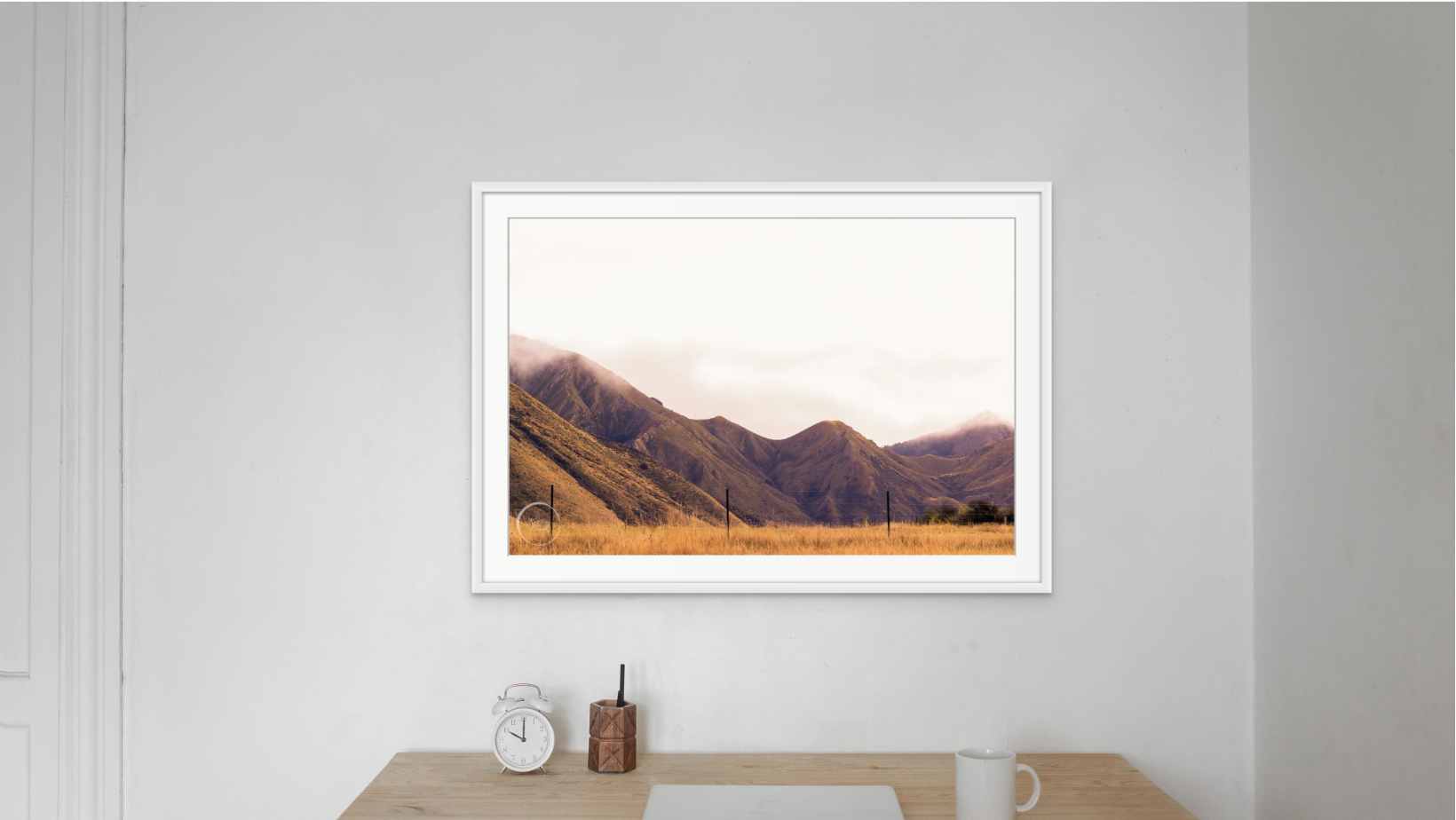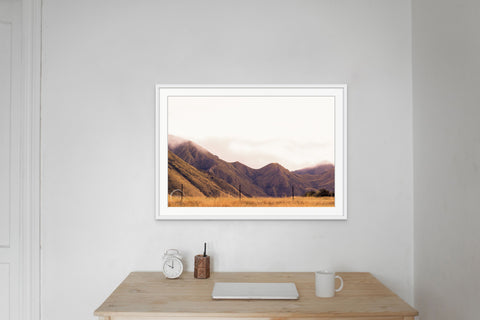Article: 6 Tips How To Hang Your Artwork

6 Tips How To Hang Your Artwork
Artwork has the ability to transform a space, adding depth, personality, and visual interest to your home or office. However, achieving the perfect balance and aesthetic appeal when hanging art requires more than simply placing a nail in the wall. In this guide, we'll delve into some often-overlooked rules to hang artwork like a seasoned curator, elevating your space to new heights.
1. Consider the Purpose of the Space
Before diving into the specifics of hanging artwork, it's important to consider the purpose of the room where the art will be displayed. Different spaces demand varying approaches to art placement. For example, a serene bedroom may benefit from calming landscapes, while a vibrant living room could showcase bold, colorful pieces. Understanding the function of the room will guide your decisions regarding the size, style, and placement of artwork.

2. Embrace the Rule of Three
While many interior design principles focus on symmetry and balance, the rule of three offers a refreshing departure. Instead of opting for pairs or even numbers of artworks, consider grouping pieces in threes. This asymmetrical arrangement creates visual interest and dynamism, drawing the eye and adding depth to the space. Experiment with varying sizes and styles within the grouping to achieve a harmonious yet eclectic display.

3. Explore Alternative Hanging Methods
Traditionally, artwork is hung at eye level, typically around 57 to 60 inches from the floor to the centre of the piece.
While this guideline works well, don't be afraid to deviate from the norm. Experiment with unconventional hanging methods, such as arranging artwork slightly higher or lower than eye level, to create unexpected visual impact. Additionally, consider hanging artwork in unconventional spaces, such as above doorways or nestled within built-in shelving, to maximize your display options.
4. Pay Attention to Scale and Proportion
One of the most common pitfalls when hanging artwork is neglecting to consider scale and proportion. A tiny piece of art may get lost on a vast expanse of wall, while an oversized piece can overwhelm a small room. When selecting artwork for a particular space, take measurements to ensure it complements the proportions of the room.
If in doubt, opt for larger pieces, as they tend to make a more significant impact and fill the space more effectively.

Image: Hydrangea Portrait
5. Create Visual Flow
Artwork should not exist in isolation but rather contribute to the overall flow and cohesion of a space. Consider the layout of your home or office and aim to create a sense of continuity between rooms. Choose artwork that complements the existing color scheme, style, and furnishings, creating a seamless transition from one space to the next. Additionally, experiment with arranging artwork in a cohesive series or gallery wall to establish a narrative or visual theme throughout your home.
Incorporating these often-overlooked rules to hang artwork will not only enhance the aesthetic appeal of your space but also showcase your art collection with thoughtfulness and intentionality.
6. Finding the Perfect Size and Height
Determining the ideal size and height for hanging artwork can be a daunting task, but with a few pro tips, you can confidently showcase your collection to its full potential.
Size Matters
When selecting artwork for a specific wall or space, it's essential to consider the scale of the piece in relation to the surrounding elements. As a general rule of thumb, artwork should occupy approximately two-thirds to three-fourths of the available wall space. This proportion ensures that the artwork makes a statement without overwhelming the room or the furniture. When placed above furniture the same rule applies. If a larger width it can look top heavy.

However, don't be afraid to break this rule for dramatic effect—a single oversized piece can create a stunning focal point in a minimalist space.
Height Considerations
While the traditional recommendation of hanging artwork at eye level remains a valuable guideline, i.e. hung at eye level, approx 57 to 60 inches from the floor to the center of the artwork, there are exceptions to this rule. When hanging artwork above furniture, such as a sofa or console table, aim to position the center of the piece roughly 6 to 8 inches above the top edge of the furniture. This placement creates a visually cohesive look and prevents the artwork from feeling disconnected from its surroundings.

Image: Moke Lake Queenstown
Spacing and Arrangement
Once you've determined the size and height of your artwork, it's time to consider spacing and arrangement. When hanging multiple pieces together, maintain a consistent spacing of 2 to 3 inches between each piece to ensure visual harmony. Avoid overcrowding the wall—less is often more when it comes to art arrangement. Experiment with different layouts, such as linear arrangements, asymmetrical clusters, or grid formations, to find the arrangement that best suits your space and aesthetic preferences.

Grouping Artwork
Grouping artwork is an excellent way to create a cohesive and dynamic display, but it requires careful planning and consideration. When grouping multiple pieces together, aim to create visual balance by varying the size, shape, and orientation of the artwork. On way is to start by arranging the largest piece in the center and gradually add smaller pieces around it, maintaining an overall sense of symmetry or asymmetry, depending on your desired aesthetic. Another way is to group pieces together to make them as one large art piece. It all depends on the size of the wall space you want to fill, and the story you want to tell.

Final Touches
Once you've hung your artwork according to size, height, spacing, and arrangement, take a step back and assess the overall effect. Make any necessary adjustments to ensure that the display feels balanced and cohesive. Consider incorporating additional elements, such as decorative accents or lighting, to enhance the visual impact of your art collection further.
With these tips, you'll be well-equipped to create stunning art displays that captivate and inspire. Happy hanging!

